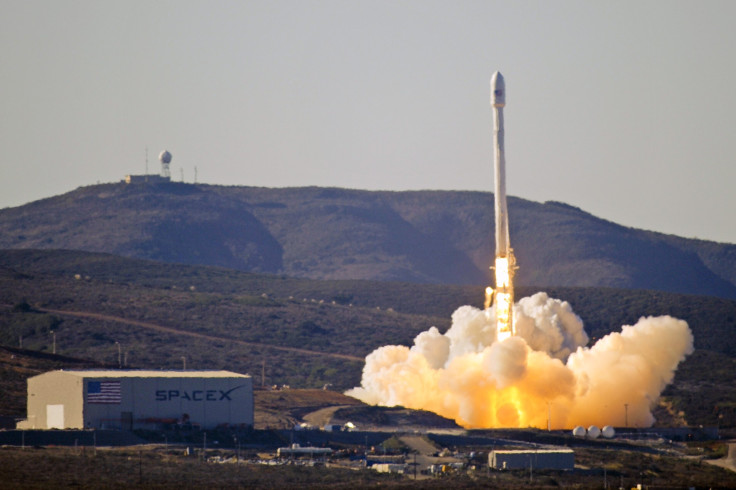SpaceX US Intelligence Payload Launch Live Stream: When, Where, How To Watch

A sensor issue forced SpaceX to scrub its Sunday Kennedy Space Center launch of a U.S. spy payload, but the mission was rescheduled for Monday.
Sunday’s launch was called off with just a minute remaining at 7:15 a.m. EDT. There’s a two-hour launch window Monday, beginning at 7:15 a.m. EDT.
Standing down today due to a sensor issue; backup launch opportunity tomorrow morning.
— SpaceX (@SpaceX) April 30, 2017
You can watch the launch live here.
Read: Middle Stone Age Man Learned To Make Serrated Edges
Following a successful launch, the Falcon 9’s first stage will attempt to return to the landing zone at Cape Canaveral, Florida.
"The team was looking into a sensor issue on the first stage that was a bit out of family with what we were expecting," SpaceX engineer John Federspiel explained on the countdown webcast. "Out of an abundance of caution, we have decided to scrub today’s launch."
Read: US Should Stay In Paris Accord, Perry Says
USA Today said there’s a 70 percent chance of favorable weather for the rescheduled launch, but liftoff winds could be a concern.
SpaceX successfully relaunched a previously flown Falcon 9 booster March 30 in deploying a commercial satellite. The Falcon 9 being used this time around, however, is factory fresh, Quartz reported.
The current mission, known as NROL-76, involving a top-secret payload for the National Reconnaissance Office, which operates Earth-observation satellites that gather information on such things as North Korea’s nuclear program and China’s island-building in the South China Sea.
NASA said NROL-76 designation is arbitrary to keep the satellite’s identity secret. Once in orbit, the payloads are renamed with the prefix USA. The next number in the sequence is USA-276. The first of the USA satellites was deployed by the Space Shuttle Atlantis in February 1990.
“Like most NRO missions, the identity of the satellite – or satellites – that will be deployed during the NROL-76 mission remains classified, as does the mission’s target orbit and the nature of the mission the spacecraft will perform. As is also normal for NRO launches, this has not stopped speculation,” NASA said.
“As the launch is the first time a large NRO spacecraft has flown aboard a Falcon 9, it has been difficult to compare NROL-76 to previous launches.”
Hazard areas were established for airmen and mariners ahead of the launch. The rocket will head northeast, flying out over the Atlantic, before the first stage makes the return trip. A second hazard area has been established over South Africa for the deorbit of the second stage.
NASA said the payload likely will be placed in an inclined orbit.
“The NROL-76 launch will not be targeting a sun-synchronous orbit, typically used by the NRO’s optical imaging satellites. While it is possible to reach such orbits from the Kennedy Space Center or Cape Canaveral, the rocket would have to perform a series of dogleg maneuvers that would severely limit its payload capacity,” NASA said.
NASA speculated the mission could involve a new series of satellite or a technology demonstration.
The reconnaissance office has launched 25 satellites since 2006, all of them on rockets built by the United Launch Alliance, a joint venture involving Boeing and Lockheed Martin. Amazon founder Jeff Bezos’ Blue Origin is expected to join the competition for military and intelligence work in space within a few years with its New Glenn reusable rocket.
© Copyright IBTimes 2024. All rights reserved.






















